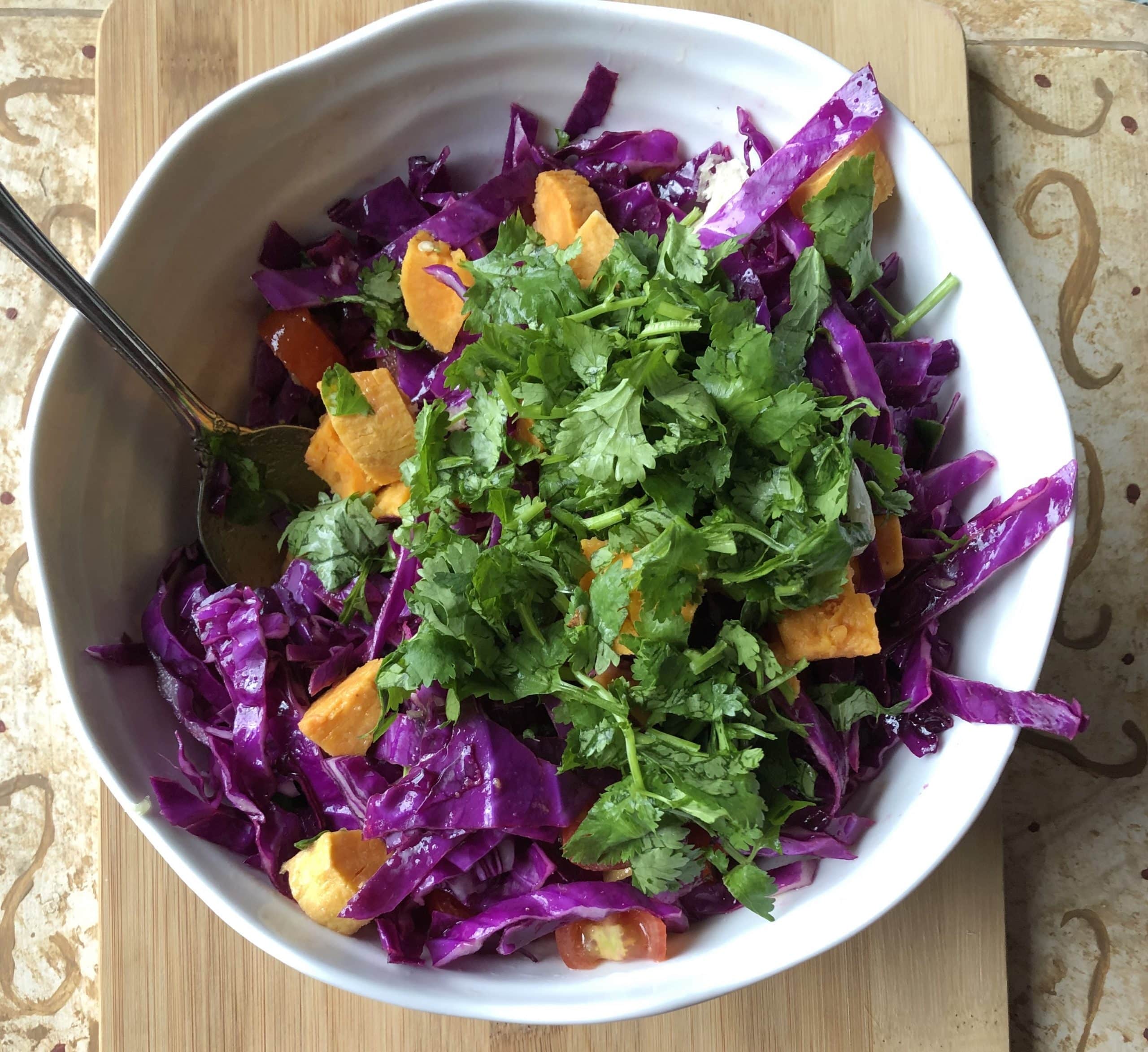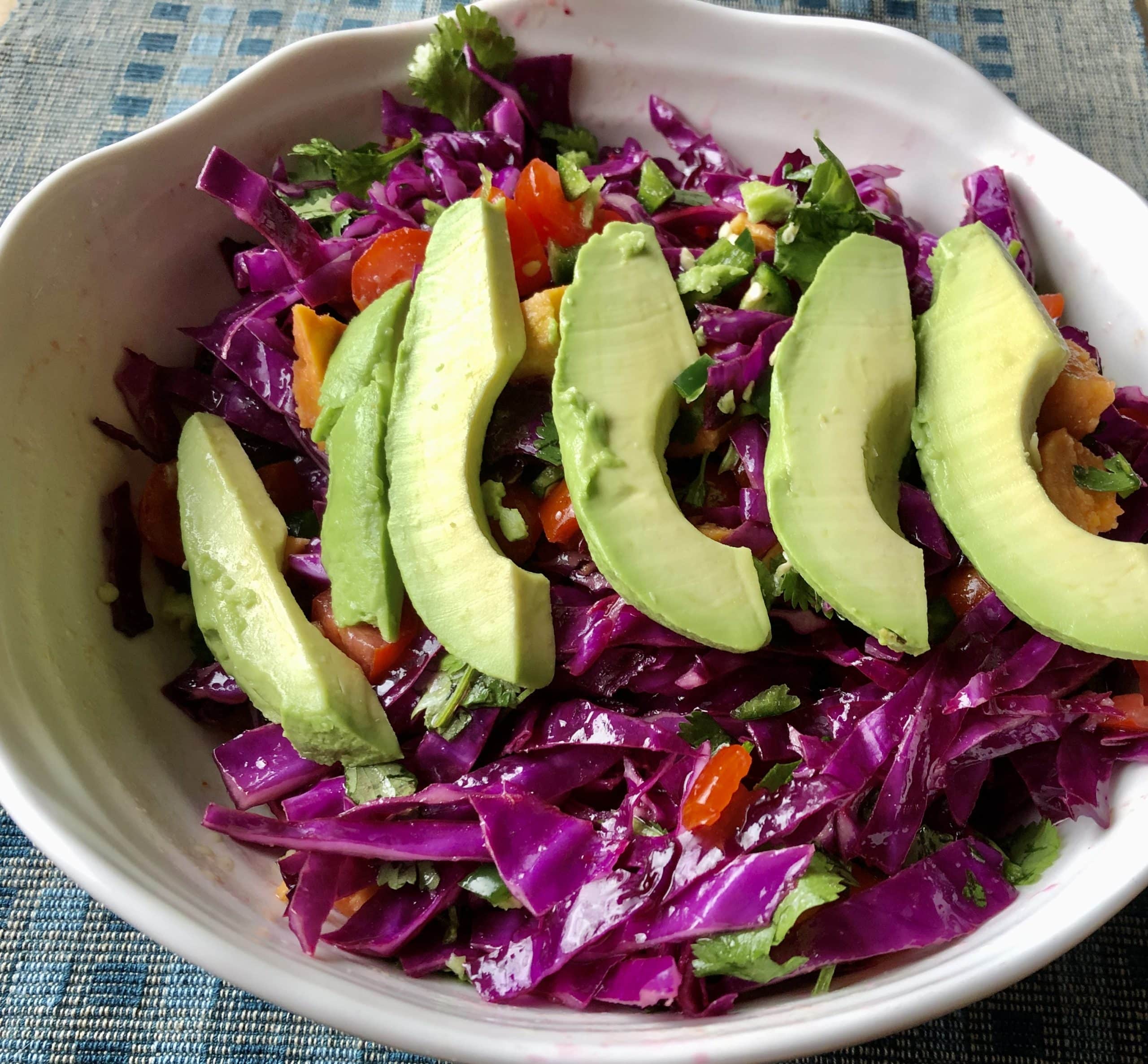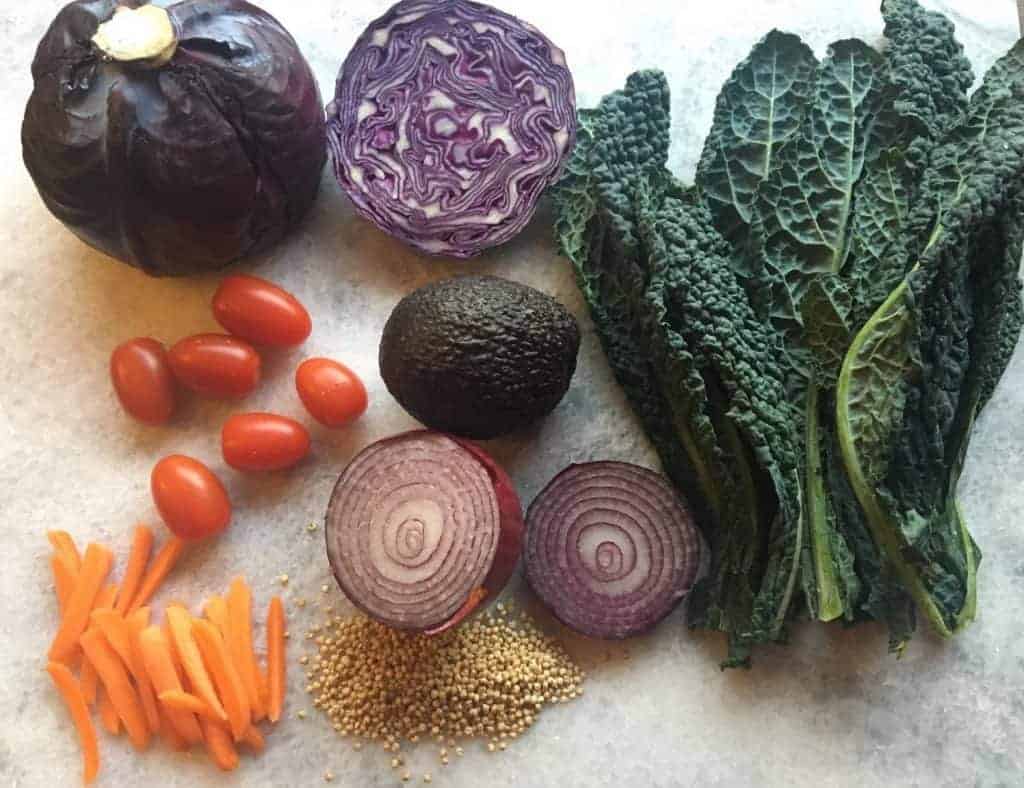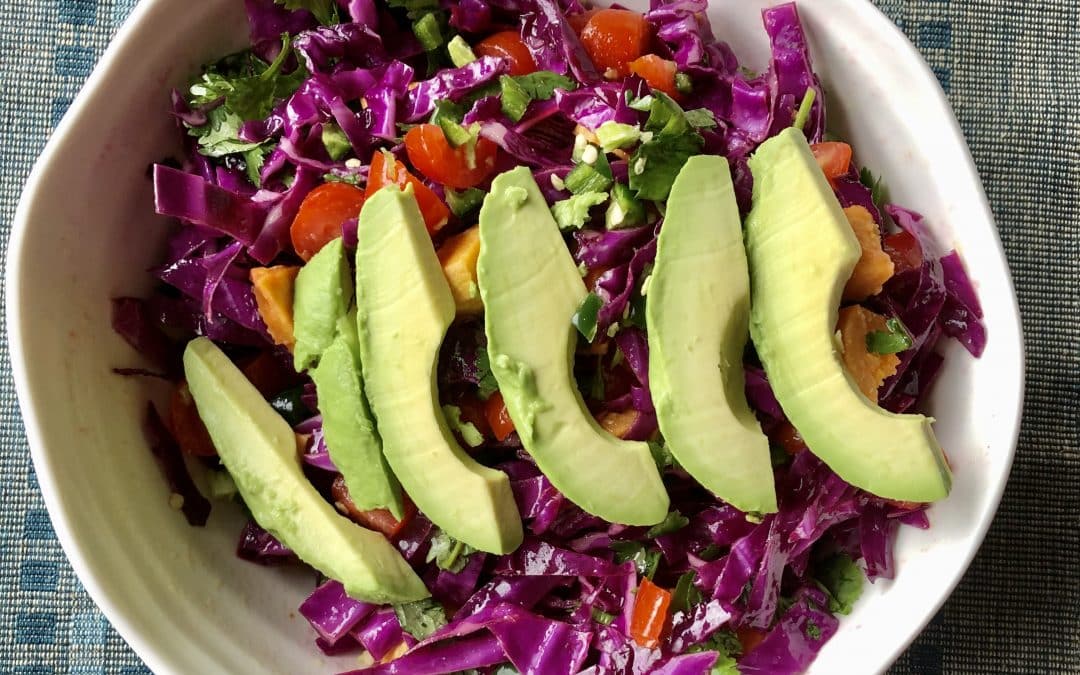Improve Your Gut Health with Polyphenols
Table of Contents
Polyphenols are found in many plant foods and provide many health benefits! I am excited to share a few ways that polyphenols help boost gut health and prevent other chronic diseases. We will also explore some of the different types of polyphenols and which foods are part of them. I have a new recipe that I hope you will love!
We will discuss which foods are polyphenols rich foods and flavonoid foods, which foods increase BDNF, and quercetin in green tea, along with lots of other information about these beneficial phytochemicals.
What are Polyphenols?
Polyphenols are potent phytochemicals that help our body through fantastic antioxidant activity. They fight inflammation and reduce free radicals, which increase our risk for chronic disease.
How Do Polyphenols Affect Your Body?
Let’s talk about how polyphenols rich foods help improve our health.
While researching the development of Vine Ripe Nutrition’s Digestive Wellness Program, I was pleasantly surprised to learn the best polyphenols to benefit gut microbiota. I learned more about this at a recent webinar by Kate Scarlata on “A Holistic Approach to IBS, sponsored by Fody Foods, and had some excellent resources I can use.
Health Benefits of Polyphenols in Gut Health
How do polyphenols improve GI Health?
Because polyphenols are not easily digested, they act inside our body like prebiotics by nurturing and helping increase the number of healthy bacteria in our gut and reducing potentially harmful bacteria. Below is a list of these foods.
Healthy bacteria help improve our body’s ability to use polyphenols in other ways to improve our health. This makes it sort of a win/win, symbiotic relationship! Here is a research article that highlights a little more about this relationship.
Best Polyphenols foods for Gut Health
People often wonder, What are polyphenol foods? And what are the best polyphenols for gut health?
Here is a list of polyphenol foods with the highest polyphenol content for digestive wellness.
- Dark berries with polyphenols, like strawberries, raspberries, cranberries, and elderberries
Berries high in polyphenols are an excellent choice for gut health! - Purple plums and currents
- Cocoa powder and dark chocolate
- Flaxseed
- Tea
- Coffee
I was surprised to learn that coffee beans are among the highest sources of polyphenols, including chlorogenic acid which helps reduce oxidative stress and inflammation . Caffeic acid, another polyphenol in coffee, benefits the immune system with its antioxidant and anti-inflammatory properties.
Other Health Benefits of Polyphenols
As a registered dietitian, I learned about the benefits of polyphenols, but researching what they do was almost overwhelming but in a perfect way.
More research needs to be done in this area, but these are inspiring possibilities: What we eat can prevent and manage so many chronic diseases!
Health Benefits of Polyphenols in Cardiovascular Wellness
Two ways that polyphenols help promote a healthy heart are their role in reducing inflammation and their antioxidant activity, which helps remove free radicals in the blood vessels.
These actions help lower LDL cholesterol and blood pressure, decrease stroke risk, and increase HDL cholesterol. Check out this article which has more about how it helps.
Some health benefits of polyphenols in olive oil include reducing the risk of heart disease. Here is an excellent article about how polyphenol rich olive oil can reduce cardiovascular disease.
Potential Health Benefits of Olive Oil and Plant Polyphenols – PMC (nih.gov)
The polyphenol quercetin found in green tea, apples, and additional foods helps prevent strokes and cardiovascular disease.
Health Benefits of Polyphenols Foods in Our Brain
Polyphenol foods antioxidant benefits and ability to improve gut health are some of the big reasons they help prevent neurogenerative brain disease. Much research has been done on the relationship between a healthy brain and the gut.
In addition, the polyphenols known as “stilbenes,” most commonly found in blueberries, may promote the secretion of beneficial brain-promoting chemicals like “brain-derived neurotrophic factor (BDNF). You can find out more in this informative research article from 2015. When there are increased BDNF levels, it prevents the death of brain cells.
More research is being done to see how polyphenols affect anxiety, depression, and other mood disorders, but much more needs to be studied on how they benefit. Here are some additional ways to increase your BDNF levels.
Health Benefits of Polyphenols Cancer in Prevention and Survival
These medicinal antioxidants also play an essential role in cancer prevention and may affect many cellular mechanisms in cancer growth.
One way that polyphenols do this is by helping reduce our body’s inflammation and boost our immune system. I like the article’s overview of the different types of polyphenols in our food and how they can help. It is an essential reminder that the more variety we have of medicinal plant foods, the more benefits we get!
Health Benefits of Polyphenols Skin
In addition to the above benefits, research has shown that polyphenols protect our skin from the harmful effects of UV rays, which gives our sunscreen an additional boost when we eat these foods. The antioxidant benefits from these foods also provide a real anti-aging advantage. You can find out more about how polyphenols benefit our skin here.
Health Benefits of Polyphenols to Prevent and Manage Diabetes
Because of their anti-inflammatory role in the body, polyphenols are very beneficial for preventing Type 2 Diabetes and might also help improve blood sugar. This entire article about these benefits is worth reading.
Polyphenols Role In Achieving a Healthy Body Weight
I have included an article below highlighting the Potential Health Benefits of Polyphenols and their relationship to a healthy weight. For instance, a few of these ways involve assisting the body in burning fat, limiting the ability to store excess fat, and reducing inflammation in the body, You can find out more details about how polyphenols help maintain a healthy weight here.
What About Polyphenol Supplements?
It is best to get beneficial food components like polyphenols from the food itself. Supplements are not well regulated and may not always have the active ingredients they say they have, and some may even have less healthy by-products. There is also a food synergy where all the parts work better together than a small, isolated component.
And it is much more delicious to have some dark berries high in polyphenols than swallowing a pill.

Types of Polyphenols In Our Foods
Before jumping into this research in this blog post, I usually thought of only resveratrol and anthocyanins as polyphenols with blue, violet, and red hues. These two polyphenols are known for their antioxidant activity, which benefits heart health and prevents cancer. However, there is much more than that!
From my research, I learned that there are two main types of polyphenols.
-
Flavonoid
-
Phenolic Acids
Within each of these two main types, there are subcategories within them.
You might wonder, like I did, “Why are there so many names for these polyphenols? It’s so confusing!”
But thinking back to my old chemistry and life science science courses in college, I realized that the names often come from their chemical structure and biological activity. That is why there are so many names to keep these beneficial plant chemicals straight!
Subcategories of flavonoids Foods include:
- anthocyanins
- flavones
- flavonols
- isoflavonoids.
Subcategories of phenolic acids include:
- lignans
- stilbenes
- hydroxybenzoic acid
- hydroxycinnamic acid.
And within these subcategories, these polyphenols. They are further divided into individual members within each subcategory. Some of these beneficial phytochemicals may sound familiar and include:
- EGCG found in green tea
- Quercetin found in apples
- Geinstein found in soy
- Ellagic acid found in berries
- Revesterol from grapes
These are all a type of polyphenols!
Recipe Rich in Polyphenols
Today’s recipe is rich in polyphenols, beautiful color, and delicious taste. Above all, I love the interesting cultural background of my recipe for Behl.
What is Behl?
Behl is an appetizer or salad often served by street food vendors in India. It usually contains something crunchy, like puffed rice. People enjoy this salad/snack for the sweet, salty, tart, and spicy components that make it rich in flavor. Other familiar ingredients in Behl include cabbage, tomatoes, and potatoes.
You can serve this recipe as a side dish to your favorite Indian dish, for example, this recipe below or I think it would be delicious as a side dish with anything!

Purple Cabbage Recipes
Purple cabbage is both beautiful and delicious. And you can add high in healing polyphenols!
Purple Cabbage Behl Salad
A delicious salad inspired by this recipe is served seasonally at one of our favorite restaurants in Asheville, Chai Pani, which features Indian Street Food. I used purple cabbage in my recipe and added sweet potatoes. I love the green and red of the cilantro/green onion and tomatoes. You can even mix purple and green cabbage! Serve it over quinoa if desired. Top with roasted peanuts and drizzle with chutney!
4 cups thinly sliced purple cabbage
One medium sweet potato, baked until still slightly firm
½ cup chopped tomatoes
Two green onions chopped
1/4 cup garlic-infused oil
1/3 cup lemon juice (you could even use lime instead)
One jalapeno pepper, chopped and seeded
1/3 cup chopped cilantro
Sliced avocados
Garnish with additional cilantro, green onions, chutney (see recipe below), and peanuts.
This chutney recipe is from Bon Appetit. I included it because I like its simplicity. Feel free to create your own or make one of the other great ones.
Directions
After the sweet potatoes have cooled, peel and cut them into 1/2-inch cubes. In a medium bowl, add thinly sliced cabbage and tomatoes. Lightly mix in the lemon/lime juice, olive oil, salt, and pepper to taste. Toss in the sweet potatoes and green onions.
Add sliced avocado to the top, garnish with your favorite toppings, or serve them on the side.
More Red Cabbage Recipes
I like to mix green and red cabbage in recipes. You can make these recipes with all red cabbage. Be aware when cooking with red cabbage that it can cast a blue color onto other foods. That is those polyphenols.
This cabbage slaw has a mixture of red and green cabbage.
Here is also a cabbage skillet recipe mixing green and red cabbage if desired.
Eating Well also has these delicious red cabbage recipes.
Foods rich in Polyphenols
Here are the best way sources of polyphenols-rich foods. The bigger the variety in your meals, the better!
Polyphenol Rich Fruits
Blueberries, blackberries, raspberries, cranberries, cherries, red and purple grapes, apples, plums, pomegranates, citrus fruits
Polyphenol Rich Vegetables
Red cabbage, red onion, eggplant, purple cauliflower, purple carrots, broccoli, onions, celery, parsley
Other Foods Rich in Polyphenols
Chocolate, black beans, extra virgin olive oil, soy, walnuts, black olives, whole grains, flax and sesame seeds
Polyphenol Rich Beverages
Coffee, tea, red wine, green tea
Other Polyphenols Rich Recipes
In addition to my latest recipe, here are some more nutrition powerhouses! I hope that you find a new one in this collection.
Apple Blueberry Tofu and Kale Salad
https://vineripenutrition.com/10-foods-that-make-women-feel-more-amazing
The article below features the Pomegranate Spritzer and the Black-Eyed Pea Salsa, full of polyphenols.
Decadent Chocolate Dip with Strawberries
In conclusion, my original intent of this post was to share the health benefits of polyphenols and our gut health, but the more I learned, the more I wanted to share the role of these foods in our overall health! I hope that I have inspired you to eat more of them!
As a registered dietitian living in Asheville, NC, I love helping others find an eating plan that works for them and helps them feel their best!
If you are looking for an Asheville Nutritionist to help you on your journey to gut health for women, you may be interested in working with me through my online courses and support group.


